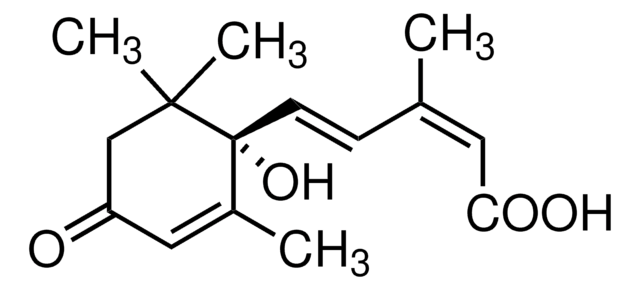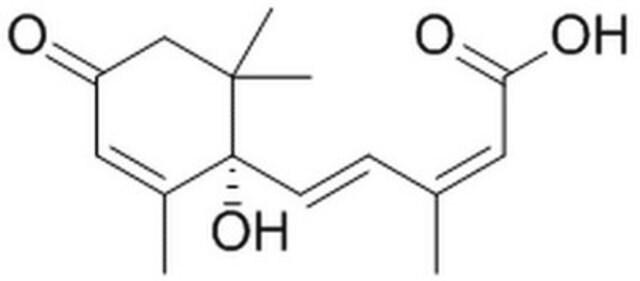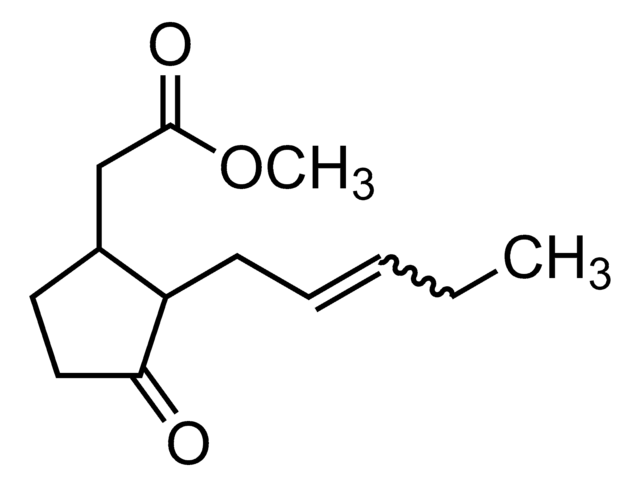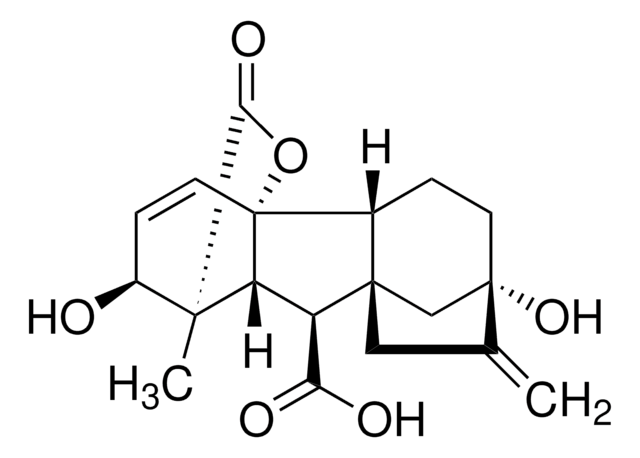Key Documents
862169
2-cis,4-trans-Abscisic acid
synthetic, 98%
Synonim(y):
(±)-Abscisic acid, (2Z,4E)-5-(1-Hydroxy-2,6,6-trimethyl-4-oxo-2-cyclohexen-1-yl)-3-methyl-2,4-pentadienoic acid, ABA, Dormin
About This Item
Polecane produkty
Poziom jakości
Próba
98%
Postać
powder
mp
186-188 °C (lit.)
temp. przechowywania
2-8°C
ciąg SMILES
CC(\C=C\C1(O)C(C)=CC(=O)CC1(C)C)=C\C(O)=O
InChI
1S/C15H20O4/c1-10(7-13(17)18)5-6-15(19)11(2)8-12(16)9-14(15,3)4/h5-8,19H,9H2,1-4H3,(H,17,18)/b6-5+,10-7-
Klucz InChI
JLIDBLDQVAYHNE-LXGGSRJLSA-N
Szukasz podobnych produktów? Odwiedź Przewodnik dotyczący porównywania produktów
Powiązane kategorie
Opis ogólny
Zastosowanie
- Chiral Separation of Abscisic Acid: Research demonstrated direct chiral separation of abscisic acid using high-performance liquid chromatography with a phenyl column and a gamma-cyclodextrin mobile phase, advancing the analytical methods essential for studying plant stress hormones (Terashima et al., 2023).
- Xanthine Oxidase Inhibitory Activity: A study including abscisic acid derivatives showed significant xanthine oxidase inhibitory activity, offering potential health benefits and therapeutic applications (Miyata et al., 2019).
- Anticancer Potential: Extracts containing abscisic acid from mangrove endophytic fungi exhibited cytotoxic properties and induced G(0)/G(1) cell cycle arrest and apoptosis in human cancer cells, highlighting their potential in cancer treatment strategies (Zhou et al., 2018).
- Antidiabetic Activity: Extracts involving abscisic acid from an endophytic fungus showed promising antidiabetic activity, potentially improving treatment options for diabetes through natural product research (Uzor et al., 2017).
- Glucose Tolerance and Insulinemia Reduction: A groundbreaking study found that microgram amounts of abscisic acid in fruit extracts significantly improve glucose tolerance and reduce insulin levels in rats and humans, suggesting its use as a dietary supplement for managing diabetes (Magnone et al., 2015).
Kod klasy składowania
11 - Combustible Solids
Klasa zagrożenia wodnego (WGK)
WGK 3
Temperatura zapłonu (°F)
Not applicable
Temperatura zapłonu (°C)
Not applicable
Środki ochrony indywidualnej
Eyeshields, Gloves, type N95 (US)
Wybierz jedną z najnowszych wersji:
Masz już ten produkt?
Dokumenty związane z niedawno zakupionymi produktami zostały zamieszczone w Bibliotece dokumentów.
Klienci oglądali również te produkty
Nasz zespół naukowców ma doświadczenie we wszystkich obszarach badań, w tym w naukach przyrodniczych, materiałoznawstwie, syntezie chemicznej, chromatografii, analityce i wielu innych dziedzinach.
Skontaktuj się z zespołem ds. pomocy technicznej







